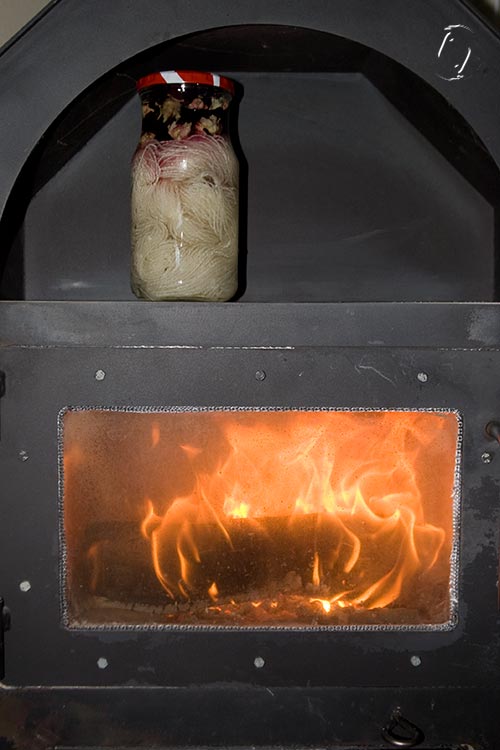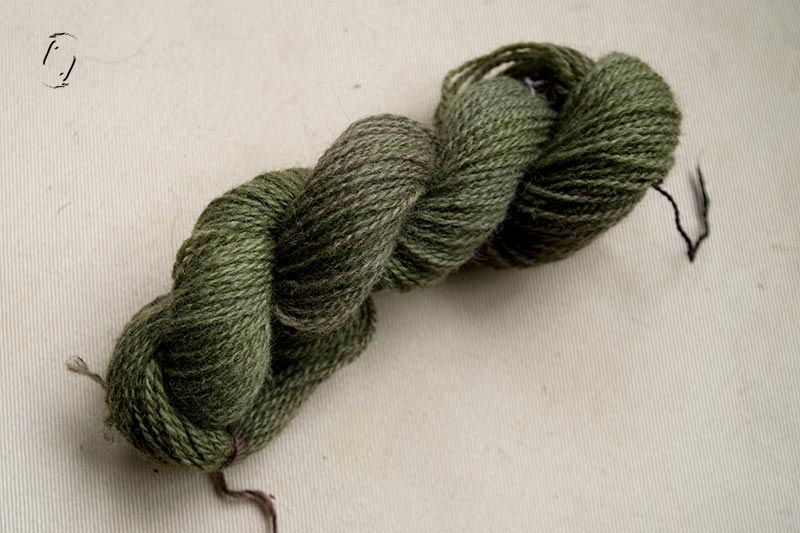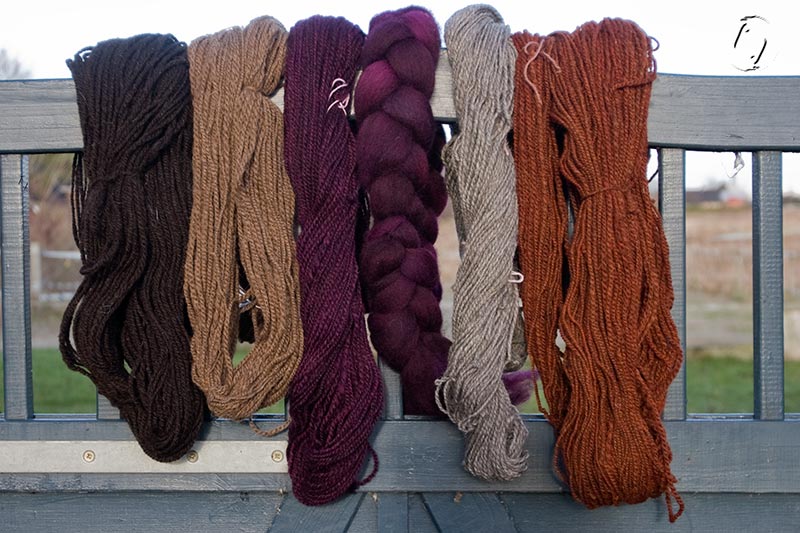Time to dye! Well, that’s how I felt on more than one level when I woke up on the morning of new year’s eve, massive headache and eating seemed like a waste of time. So I decided I needed a bit of a treat while husband kindly mucked my horse boxes in the rain and wind.
So I whipped out a bag of hollyhock flowers, took a look at the rain water horse trough and decided it looked clean and fresh enough for boiling some plant in.
Normally flowers don’t really give their colours up to wool, but hollyhock is one of the exceptions, in fact I simmered them twice in fresh water because they seemed to give A LOT of dye when I tried them on my cloths and paperprints. And the soup sure looks promising!
I didn’t have any mordanted yarns beside the usual alum+CoT, so I decided to try the pH test for variation and leave other experiments for later. I have two more bags of 100 g each. I left the soup to steep over night since I had “unfortunately” agreed to invite company for dinner. 😉 The pH test can be conducted two ways, in the dye pot or as an afterdip. According to the books, hollyhock generally reacts well to modifiers and mordants, so I’ll need to do iron and tin as well at some point.
For this lot I started with 4 skeins. One had a vinegar bath after, one had an alkaline bath and the last two were left to soak in the bath for 3 days, one mordanted, one not. Then one dipped in iron rainwater and one in tap water. I rather think I’ll have to set up a full experiment someday with every single combination that I can think of!
I used a 1:1 dry flowers to yarn. And after I’d begun to simmer the flowers I realised that with the Dyer’s chamomile 100g of flowers is actually 400 g of fresh flowers, so using a whole bag for my intended 100 g would probably be a bit over the top. So I thought I’d be doing batches of ~100 g until I got bored or ran out of yarn, but in the end the soup was too smelly and the results too bland, so I just chucked it.
First impressions: Blah. In fact all 4 skeins looked the same beigey purple. Now, was that due to soaking them in tap water before putting them in the dye (I’d forgotten to soak and just went for a quick dip, drops of dye in the tap water turned grey) or have the flowers been simmered at too high temps?

Weather forecast says grey, grey, grey, so better pix will have to wait if necessary.
Dye pH: 6. Vinegar afterdip did, well, a teeny bit towards a heather tint. Iron dip a slightly browner beige and the hard water rinse a slightly greyer beige…
Then lo and behold what happens when you dip in water with a teeny glug of ammonia. I LURVE that green! (well, even better when wet and fresh) In fact if the Hollyhocks don’t prove good for anything else, I’ll surely use this strategy again.
Next up will be an unsimmered test. It’s going to live here, mimicking a solar dye because we don’t get up at night to keep the fire going (this is the only heating source we use in the house). So it will be warm/cold alternately just like outside in summer.

â Leave a Comment
Sorte stokroser
Første forsøg med stokroser gik ikke så godt (ok, andet forsøg, første gang var jo på noget stof og papir, hvilket gav meget kraftige farver!). Det blev sådan beigegråt med kun meget lille forskel på efterbade med eddike, jern og hårdt vand. Til gengæld blev det med en lille glug salmiak en vældig fin grøn, så det skal jeg arbejde lidt med på et tidspunkt!
Jeg ved ikke om de blev kogt for meget, eller hvad der skete, for jeg brugte rigeligt med plantemateriale, jeg glemte lige i forbifarten at blomsterne jo var tørret og det giver ved jeg ved gÃ¥seurt et forhold pÃ¥ 1:4 i vægt i forhold til friske…
Jeg tester lige en koldfarvning, som jeg sætter et stykke tid på brændeovnen, den er varm om dagen og kold om natten, ligesom en god dansk sommer. Måske blomsterne bedre kan lide den behandling.






